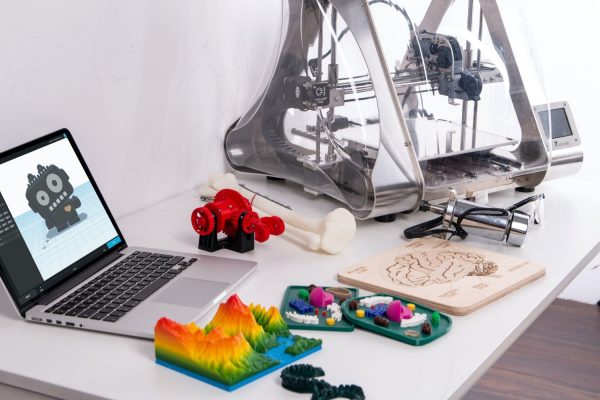The many incredible ways 3D printing is being used today

3D printing is a relatively new technology that is being used in a wide range of ways, from creating art to building properties. Find out what our favourite 3D printing applications are here.
1. Building houses
Who would have thought even twenty years ago that it would be possible for a machine to build a house? Well, now this truly science-fiction-sounding technology has become a reality. Across the world, 3D printers are creating the basic structure of houses using a blueprint from an architect and just a few (human) supervisors.
3D printing homes can reduce construction costs considerably, making it a great option for creating low-cost housing.
If you want to find out more about 3D printed houses, take a look at our blogs on 3D printed home FAQs and the pros and cons of 3D printed homes.
2. Making art
Creating art is often considered a solely human endeavour, but nowadays 3D printers are becoming a key part of helping make creative visions a reality.
Artists are using 3D printers in a variety of ways to help bring their projects to life, from major sculptures like Hypnerotomachia Naturae, which is installed at an exhibition in Landes Museum, Innsbruck, and a 3D printed replica of Michelangelo’s David, to 3D printed models and wall art sold on Etsy.
There are even services that help you make a 3D selfie, i.e. a model of yourself based on a 2D picture.
3. Making practical items for the home
For those lucky enough to own a 3D printer at home, many are using the technology to create items that can be used in the home for practical purposes. This includes items like phone or tablet holders, cable attachments to prevent cables fraying, cable organisers, and backscratchers.
This is one of the biggest areas for hobbyists – the active subreddit functionalprint has over 374,000 users.
4. Making jewellery
3D printing jewellery provides jewellerymakers with much more freedom of design. While traditional technologies may struggle with more complex shapes, 3D printers are able to render interlocking patterns and other complex or abstract structures much more easily. Ultimately, it seems that the only real limit is your imagination.
5. Making gaming miniatures and gadgets

3D printing is changing both tabletop and video game experiences. For one, tabletop characters can be designed in tools like HeroForge and Anvl, after which you have the option to pay for the digital file and 3D print it using a 3D printing company or domestic printer. This is giving players much more flexibility in how they stylise their characters.
3D printing has also helped open the world of gaming up to a wider audience, especially to those with specific physical needs. For instance, 3D printers can create ergonomic console grips that make holding a console that much easier. Other solutions include braille dice for the visually impaired and more tactile board pieces.
6. Practising medical surgeries
Perhaps one of the most life-changing ways 3D printing has been used so far is in medicine. For one, 3D printers are able to produce highly accurate and detailed anatomical models, which can then be used by surgeons to practise complex surgeries in order to improve outcomes.
7. Producing medical supplies

Not only can 3D printing improve medical outcomes, it can also improve prosthetic and implant technology and create necessary supplies such as forceps and retractors very quickly and easily.
In terms of prosthetics and implants, using 3D printing for this technology can help improve their fit and function as they can more accurately be created for each individual patient. The ability to create important medical supplies is also vital when there are supply issues or medical emergencies that require fast action.
8. Preserving cultural relics – and improving museum interactivity
Museums are full of interesting artefacts, but sadly most of them cannot be viewed up close – and they most definitely cannot be touched.
But all this is changing with 3D printing technology. The technology allows museum directors to create complete 3D printed replicas of important cultural relics. These replicas can then be interacted with or experienced by museum-goers without harming the original version. The Metropolitan Museum of Art even started developing 3D printed relics made from chocolate that allow the consumer to experience the artwork with multiple senses.
It’s thought that interacting with objects using senses other than sight can help us understand the world around us in more depth, meaning this technological leap could have a big impact on learning.
Get insurance from the first UK insurance company to cover your 3D printed home
If you’re thinking of buying a 3D printed home in the UK, make sure you contact Adrian Flux for your 3D printed home insurance. We’re the first insurance provider in the UK to offer cover for these unusual homes – call us on 0800 081 0777 for a quote.







